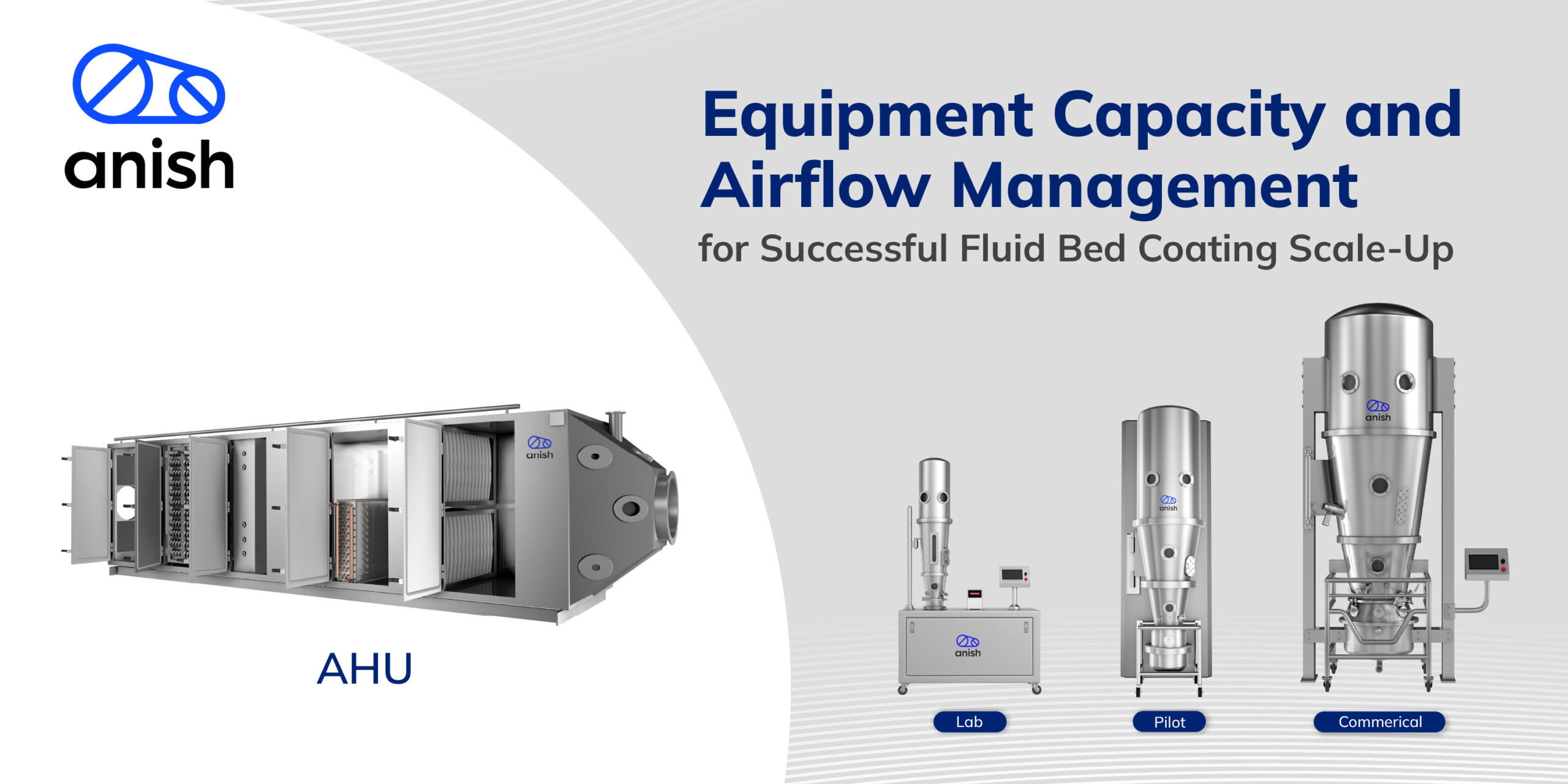The successful scale-up of bottom spray (Wurster) fluid bed coating processes hinges on managing key variables that directly influence product quality and operational efficiency. Transitioning from lab-scale experiments to full-scale production demands close attention to factors such as equipment sizing, airflow control, and residence time management. This article explores these critical considerations, providing practical insights for ensuring consistent and reliable outcomes during the scale-up of fluid bed coating operations.
Equipment Capacity:
When scaling up a fluid bed coater from a pilot or laboratory scale to an industrial or large-scale production system, several critical factors must be considered to ensure that the process remains efficient, consistent, and capable of achieving the desired coating quality. Equipment capacity—typically expressed in terms of batch size or throughput (the amount of material processed per unit time)—plays a central role in determining how various factors need to be adjusted during scale-up.
The scale-up process involves ensuring that the equipment continues to operate effectively while maintaining or improving key performance indicators like coating uniformity, fluidization quality, efficiency, and particle residence time. Here’s how equipment capacity impacts the scale-up considerations of critical factors in fluid bed coaters:
Airflow Rate: As the equipment capacity increases (i.e., as the batch size increases or the production scale expands), the airflow rate required to maintain proper fluidization increases.
Scale-Up Consideration:
- Superficial Air Velocity: The superficial air velocity (the velocity of air through the bed) must be carefully managed when scaling up. To maintain the same fluidization quality (i.e., ensuring a consistent and stable fluidized bed), the airflow rate (Q) is typically adjusted in proportion to the bed volume, which is proportional to the column cross-sectional area (A).
- The airflow rate scales with the square of the diameter (for geometric scaling).
- A larger column requires a higher airflow rate to maintain uniform fluidization of particles.
Superficial Air Velocity (vs) = A / Q
Where:
vs = Superficial air velocity (typically in m/s)
Q = Volumetric flow rate of air (in m³/s)
A = Cross-sectional area of the column or duct (in m²)
Residence Time: Longer residence times can be achieved in larger systems, but airflow and bed height must be optimized to prevent inefficiency.
Effect of Equipment Capacity: Residence time refers to the amount of time particles spend in the fluidized bed and is influenced by both the airflow rate and the bed volume. As the equipment capacity increases, the bed volume increases, which can lead to longer residence times for particles, but this can also impact the overall processing time per batch.
Scale-Up Consideration:
- To maintain consistent residence time, adjustments to air velocity and bed height may be required when scaling up. A larger system may require higher air velocities or an adjustment to the height of the bed to prevent excessively long residence times, which could lead to over-coating or inefficient use of the coating material.
- Alternatively, too short a residence time can result in inadequate coating. Therefore, particle flow dynamics and process optimization must be considered when scaling up.
Successful scale-up of bottom spray fluid bed coating is contingent upon precise management of equipment size, airflow rates, and particle residence time. By systematically addressing these factors, manufacturers can achieve reliable, high-quality coating outcomes, optimizing productivity and ensuring scalability of their coating processes from laboratory to commercial scales.
Anish Pharma is a globally recognized expert in fluid bed processing, delivering advanced solutions for drying, granulation, and coating applications. With over three decades of experience, the company provides high-efficiency systems tailored to pharmaceutical and industrial needs. Its innovative technology ensures precision, consistency, and superior product quality across all installations.
Article written by Dr. Amita Karnik, a seasoned process expert in granulation and pelletization with over three decades of experience, currently leading the Application Lab at Anish Pharma Equip Pvt. Ltd.


